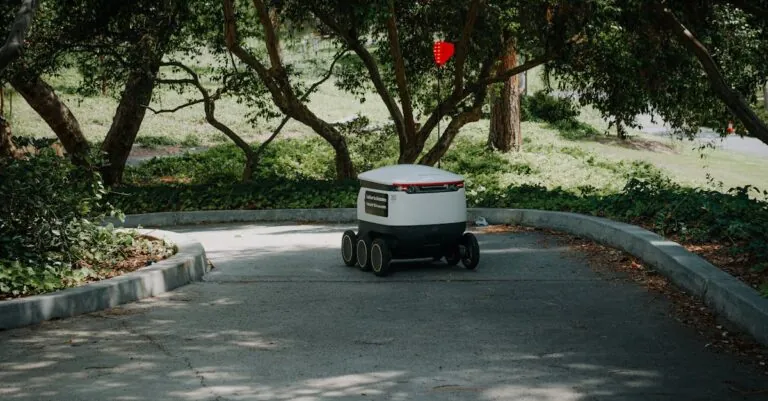Table of Contents
ToggleIn a world where multitasking is the norm and time is always of the essence, voice-based assistants have become the unsung heroes of modern life. Imagine having a personal assistant who never sleeps, never complains, and always knows just what you need—whether it’s setting a reminder, playing your favorite tunes, or even telling you the weather without the hassle of getting out of bed.
These digital sidekicks are revolutionizing the way people interact with technology, making everyday tasks feel like a breeze. With a simple command, they can turn your home into a smart sanctuary or help you navigate the chaos of daily life. So why not let them take the wheel? After all, who wouldn’t want to have a conversation with their coffee maker? Buckle up as we dive into the fascinating world of voice-based assistants and discover how they’re changing the game for everyone.
Overview of Voice-Based Assistants
Voice-based assistants serve as digital companions that revolutionize how individuals interact with their devices. They enable users to perform tasks using simple voice commands.
Definition and Functionality
Voice-based assistants are AI-driven applications that allow voice interaction to perform various functions. Users can ask questions, request information, or control smart devices. These assistants leverage Natural Language Processing (NLP) to understand spoken commands and respond appropriately. Common tasks include setting alarms, searching the web, and managing calendars. Integration with devices like smartphones and smart speakers enhances their accessibility. They significantly simplify daily routines by streamlining interactions.
History and Evolution
The journey of voice-based assistants began in the 1960s with early speech recognition systems. Development continued through the 1990s with notable advancements like IBM’s ViaVoice and Dragon Naturally Speaking. Significant progress took shape in the 2010s when tech giants introduced powerful assistants. Apple launched Siri in 2011, marking a notable shift in user interaction with technology. Following this, Google Assistant, Amazon Alexa, and Microsoft Cortana entered the market, expanding capabilities. Continuous improvements in AI and machine learning further enhanced functionality, making these assistants integral parts of modern life.
Popular Voice-Based Assistants
Voice-based assistants are now key tools in daily life, providing various functionalities to enhance user convenience. Major players include Amazon Alexa, Google Assistant, and Apple Siri.
Amazon Alexa
Amazon Alexa serves as a versatile digital assistant. Users interact with Alexa through Echo devices and other compatible products. Its capabilities include controlling smart home devices, playing music, and providing real-time information like weather and news updates. Alexa supports thousands of third-party skills, allowing for extensive customization to meet individual needs. With voice shopping features, it simplifies the purchasing process directly through Amazon, making it a popular choice for many households.
Google Assistant
Google Assistant stands out for its integration with Google’s ecosystem. This assistant powers Android devices and smart speakers like Google Nest. Users benefit from natural language processing, which allows for intuitive conversations. Google Assistant excels in answering queries and managing tasks such as reminders and calendar events. With its capability to access real-time information through Google’s vast search engine, it often delivers accurate answers and updates instantly. Enhanced compatibility with smart devices furthers its role in home automation.
Apple Siri
Apple Siri is created specifically for Apple devices, including iPhones, iPads, and Macs. Its intuitive interface supports a range of functions, from sending messages to making calls and playing music. Users appreciate its contextual understanding, allowing for conversational exchanges. Siri integrates seamlessly with Apple’s ecosystem, providing a cohesive experience across its devices. Regular updates have improved Siri’s functionality, expanding its knowledge base and enhancing user satisfaction through voice recognition accuracy and speed.
Benefits of Voice-Based Assistants
Voice-based assistants offer numerous advantages that enhance daily life and streamline tasks. Their ability to handle various activities through voice commands makes them essential tools in modern households and workplaces.
Convenience and Hands-Free Operation
Hands-free operation stands out as a major advantage of voice-based assistants. Users can engage with technology while multitasking, allowing them to cook, drive, or manage other tasks. Voice commands simplify interactions, enabling individuals to search for information quickly or set reminders without needing to touch a device. This convenience leads to improved productivity and less distraction in daily activities.
Accessibility for Disabled Users
Voice-based assistants greatly enhance accessibility for disabled users. They provide an alternative means of communication and interaction, helping individuals with mobility or visual impairments control devices and access information. Features like voice recognition enable users to manage tasks independently, improving their overall quality of life. Customizable settings further accommodate diverse needs, ensuring that technology remains inclusive and user-friendly.
Challenges and Limitations
Voice-based assistants face several challenges that can impact their effectiveness.
Privacy Concerns
Privacy concerns represent a significant issue with voice-based assistants. Many users worry about data collection and surveillance due to constant listening capabilities. Voice data storage practices raise questions about user consent and control. Reports indicate that major companies may access recordings inadvertently, leading to potential misuse of sensitive information. Research from the Pew Research Center highlights that 81% of Americans feel wary about data privacy issues related to smart devices. Without robust measures, trust may decline, limiting wider adoption. Companies need to prioritize transparency and security to address these concerns.
Understanding Context and Accents
Understanding context and accents poses another challenge for voice-based assistants. These AI systems often struggle with regional dialects or variations in pronunciation. Users speaking in diverse accents may experience difficulty receiving accurate responses. Additionally, contextual nuances can lead to misinterpretations of commands. Studies show that 60% of users encounter instances where the assistant misunderstands them due to these factors. Enhanced algorithms are required to improve localization and contextual awareness. Continuous advancements in Natural Language Processing aim to address these issues, yet developers must remain vigilant in refining these technologies.
Future Trends in Voice-Based Assistants
Voice-based assistants continue to evolve rapidly, driven by advancements in technology and user expectations. Significant shifts in artificial intelligence and machine learning influence their future capabilities.
Advances in AI and Machine Learning
Natural language processing plays a key role in enhancing the accuracy and responsiveness of voice-based assistants. Innovations in machine learning algorithms enable these systems to understand context better and respond intelligently. Increased data availability supports the training of models, resulting in improved recognition of accents and languages. Companies invest heavily in refining these technologies, addressing the 60% misunderstanding rate reported by users. As AI becomes more sophisticated, expect voice assistants to provide even more personalized experiences tailored to individual preferences.
Integration with Smart Home Devices
Seamless interaction with smart home devices defines the future of voice-based assistants. Enhanced connectivity allows these assistants to control a wide range of devices, from thermostats to security cameras. Users appreciate the convenience of managing their homes with simple voice commands. Major brands are collaborating to ensure compatibility across various platforms, making smart homes more accessible. Increased adoption of IoT devices further drives this integration, reinforcing the role of voice assistants as central hubs for home automation. As these technologies advance, users can anticipate a more cohesive and intuitive smart home experience.
Voice-based assistants are reshaping how individuals interact with technology. Their ability to simplify tasks and enhance productivity makes them invaluable in today’s fast-paced world. As advancements in AI and machine learning continue, these assistants are likely to become even more responsive and intuitive.
The growing integration with smart home devices signifies a shift towards a more connected lifestyle. While challenges like privacy concerns and context understanding remain, ongoing improvements promise to address these issues.
In this evolving landscape, voice-based assistants will play a pivotal role in making technology more accessible and user-friendly for everyone. The future looks bright as these digital companions become increasingly integral to daily living.







